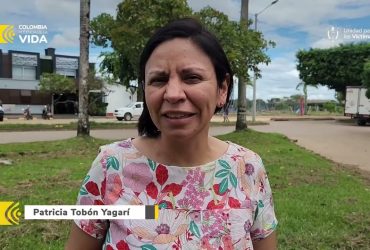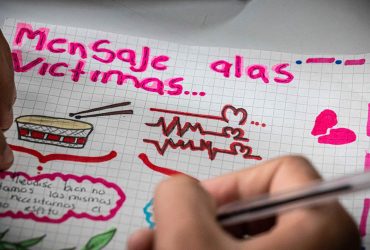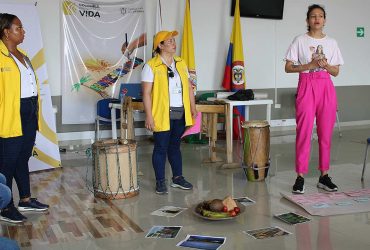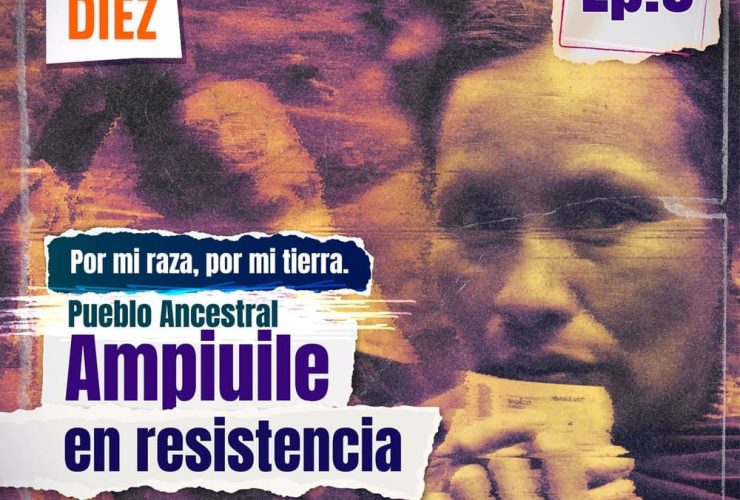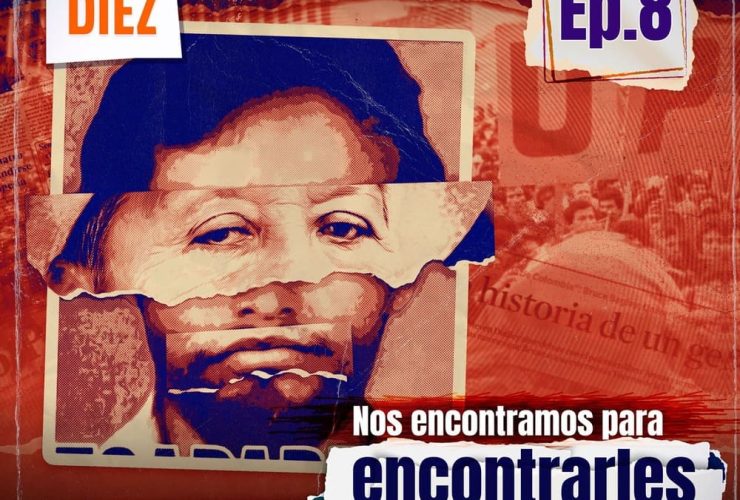Eight years ago, the Victims and Land Restitution Law (1448 of 2011) came into effect in Colombia, which has made it possible to dignify, recognize, attend, assist and reparation the survivors of events that occurred in the armed conflict since 1985, and has made it possible to have spaces for participation and impact in the municipal, departmental and national agendas.
With the purpose of restoring and guaranteeing the rights of victims, during the eight years of the Law’s validity, the Unified Victims Registry (RUV) has been consolidated in which, between 2012 and May 1, 2019, they have been included Nearly nine million people (8,816,304), individually, make up 17.7% of the country’s population.
Likewise, 616 subjects of collective reparation are registered, that is, peasant and neighborhood communities, ethnic peoples, organizations, groups and social movements, affected collectively by conflict.
Integral restoration
The reparation model in Colombia is the only integral in the world, because it includes measures of satisfaction, rehabilitation, compensation, restitution (land, housing, sources of income, access to credit, education, health) and guarantees of non-repetition. Since 2012, the Victims Unit has invested 11 billion pesos in all measures of integral reparation, of which 6.1 billion correspond to indemnities delivered to 986,961 people.
During the current presidential period, 42,197 victims have benefited with 294 billion pesos. The Unit also accompanies the returns and relocations. Since the possession of President of the Republic Iván Duque, 4,072 households have been accompanied, out of the total of 274,829 that have done this process.
As a rehabilitation measure, 213,532 victims have received psychosocial care, of which 44,388 received it in the current government.
The Unit, in addition, accompanied, between August 2018 and May 2019, 1,088 relatives of victims of enforced disappearance, in the delivery of 256 bodies and / or skeletal remains.
In the collective
Between August 2018 and May 2019 progress was made in the implementation of the Comprehensive Collective Reparation Plans (PIRC) of 118 subjects of collective reparation, with the implementation of 474 actions such as the acquisition, endowment and delivery of goods for collective use, support for productive projects and social and community infrastructure projects, in which $ 15,965 million pesos were invested.
In the same period, 12 ethnic subjects were compensated, for a value of $ 3.147 million pesos, money that should be destined for a collective use.
Through the weaving strategy, 237 collective subjects advance in the reconstruction of their social fabric, broken by fear and distrust.
Attention throughout the country and online
Free of charge and without intermediaries, the Unit serves the victims in 173 points of service and 32 regional centers throughout the country. It also serves them through virtual, telephone, face-to-face and written channels. Between August 2018 and February 2019, 3 Regional Centers (Pereira, Barranquilla and Riohacha) have been set up through inter-administrative agreements with territorial entities, with an investment of $ 5,612 million, of which the Unit contributed $ 3,885 million (69%).
Currently, 2 Regional Centers are under construction (Barrancabermeja and Ibagué) and by 2019 the construction of 3 (Pasto, Cartagena and Carmen de Bolívar) is prioritized.
Prevention and attention of emergencies
The Victims Unit has become the main humanitarian agent in the country. Since 2012, it has coordinated the attention of 5,376 humanitarian emergencies caused by armed conflict. In the same period, the entity has provided immediate humanitarian assistance, in cash or in kind, with an investment of 128,175 million pesos, which benefited 158,863 victims.
In the framework of urgent prevention, since 2012, territorial entities have been supported with resources for social and community infrastructure projects, and agricultural and livestock projects. The Unit provided materials and / or furniture to build and / or improve local community infrastructure for $ 56,155 million. Of these, $ 14,148 million were invested between August 2018 and May 2019, for 90 projects in 76 municipalities.
Likewise, since 2012 agricultural projects aimed at reducing the vulnerability of population have been supported through the physical delivery of inputs (seeds, tools, fingerlings, among others) that serve as a transition from a food security project to a productive one, with an investment of $ 6,941 million. Of these, about $ 1,862 million were invested between August 2018 and May 2019 for 39 projects.
Humanitarian Assistance
As of 2012, the population victim of forced displacement and other events with more than 7’700,000 turns of attention and humanitarian aid have been treated, for a value close to $4.8 billion. From August 2018 to May 2019, 561,066 humanitarian assistance remittances have been placed for $ 368,757 million, for 320,000 homes.
The State prioritizes the victims
As of June 2018, 798,005 victims of displacement overcame their vulnerable situation, that is, they advanced in the enjoyment of rights to food, education, income generation, identification, family reunification and health, including psychosocial care, through the 57 entities of National System of Attention and Integral Reparation to the Victims.
Incidence and participation of victims
The victims have had the opportunity to make proposals for the 2018-2022 Development Plan and to influence the public policy that concerns them at the municipal, departmental and national levels. A delegation was able to travel and express themselves in Havana, Cuba, during the peace negotiation between the Government and FARC. Three processes of election of tables of effective participation have been realized.
For the period 2017-2019, 1,057 victim tables were selected (19 local tables in Bogotá, 1,004 municipal tables, 1 district table in Bogotá, 32 departmental tables and 1 national table). The Unit designed the pedagogical and educational strategy “PARTICIPAZ, the Route of Rights” and the workshops “Resolution of conflicts with the force of truth”, aimed at strengthening the victims of the tables.
Co-financing projects
In the period from 2013 to 2018, 112 co-financing agreements were signed with 490 territorial entities under the lines of psychosocial care, income generation and food security, amounting to $ 207,567 million of which $ 146,851 million were contributed by the Unit, supporting 32,598 families. In these figures are 25 projects developed from August to December 2018, for $ 53,515 million, of which $ 43,155 were from the Unit.
International cooperation
Between 8 and 10 million dollars per year have been mobilized. More than 10 agencies, 2 programs through the Multidonant Fund of United Nations, 8 signed memorandums of understanding, articulation from the humanitarian team and attention to emergencies, are part of the work being done by the Victims’ Unit and multilateral organizations.
The Restitution of Lands
Restitution is one of components of the integral reparation of victims. The process has three stages: administrative, judicial and post-judgment. The Land Restitution Unit (URT) leads the administrative part: it receives requests, gathers evidence of abandonment or forced dispossession, determines if it inscribes the property in the Land Registry for Stripped and Forsaken Land (RTDAF) and processes the restitution processes in name of victims before the justice. 71,284 applications have completed the administrative process, which correspond to 75% of total of returned applications. In the judicial stage, there are already sentences to restore 341,725 hectares, which benefit 45,655 people.
In the post-judgment stage, 8,533 family units already have material enjoyment of properties, there are 2,478 financial debt relief orders, 2,322 court orders to relieve the payment of public utilities and 3,186 families have been benefited with property relief for an amount of $ 2,798 million condoned by the municipalities. The URT has invested $ 98,868 million in productive projects that benefit 3,756 families (43% are agricultural and 57% agricultural). Prioritized for housing of rural social interest, there are 5,787 homes.
Development Plan and eventual extension of Law
In the Development Plan, Pact for Colombia, Pact for equity, among others, the development and implementation of the “Pact for the Construction of Peace: Culture of legality, coexistence, stabilization and victims” is proposed, through design and implementation of strategies that contribute to strengthening the public policy of victims, such as:
- Settle the discussions to analyze by components, an eventual extension of Victims Law, whose validity expires in the year 2021.
- Align the policy of victims with the highest international standards, and the commitments of Colombian State with the 2030 agenda and the recent admission to the Organization for Ecological Cooperation and Development.
- Advancing in the linking of victim policy with policies for social and productive inclusion, so that they overcome vulnerability.
- Achieve the articulation of objectives and results of the public policy of victims with those set out in the stabilization process route.
- Recognize victims as key actors for regional development.
- Direct resources towards the reparation of victims mobilizing efforts and resources from assistance to reparation.
- Optimize the administrative compensation component and implement a strategy of comprehensive accompaniment in the delivery of this measure.
- Articulate the processes of return, relocation, local integration and collective reparation with local authorities and their vision of development of territories.
- Consolidate the duty of memory and truth in contribution to symbolic reparation.
- Within the framework of public policy of prevention, protection actions will be developed for leaders and women victims, given the extraordinary, extreme or imminent risk they present.
(Fin/DRR/LMY)



